Site under construction.

Using NASA’s immense archive of technical documents and reports, this book succeeds in piecing together the fascinating, behind-the-scenes story of a roll film on its journey to the moon and back. We take for granted that the Apollo missions’ photographs are stunning but the untold back-story behind them is equally so. The technical brilliance and dedication of a few key people, ensured that the Apollo 11 photographs, documenting our first footprints on another world, would endure as long as those footprints themselves.
After watching the fuzzy TV pictures of the first moon landing, the world was stunned by these pin-sharp pictures when they were released, shortly after splashdown in 1969. This book illustrates the care, the attention to detail and planning that went into sending men to the moon armed with Hasselblad cameras. But it does more than that. It follows the film from Kodak’s factory gate to the processing laboratory in Houston, lifting the veil on long forgotten logistics on the way. The detail in this book is incredible and will bring to life the story of the iconic photography from the Apollo 11 mission.
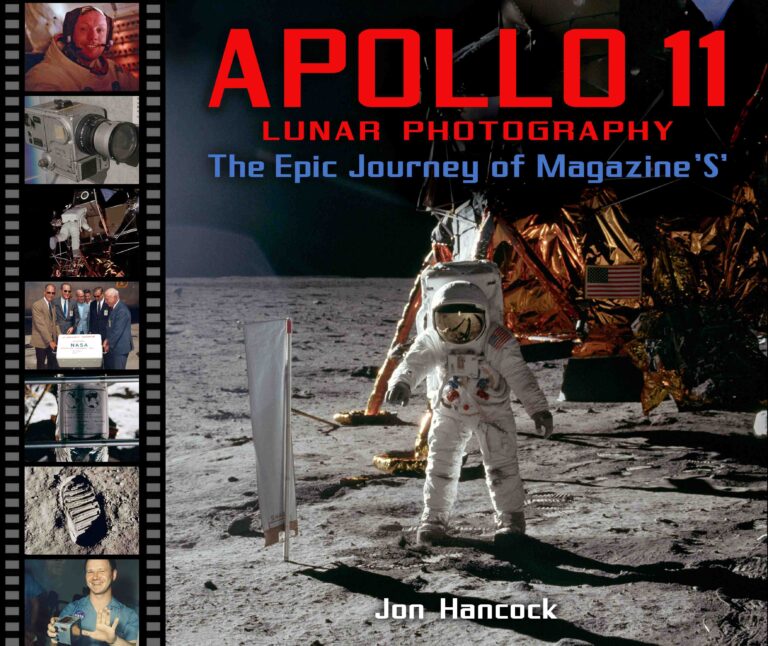
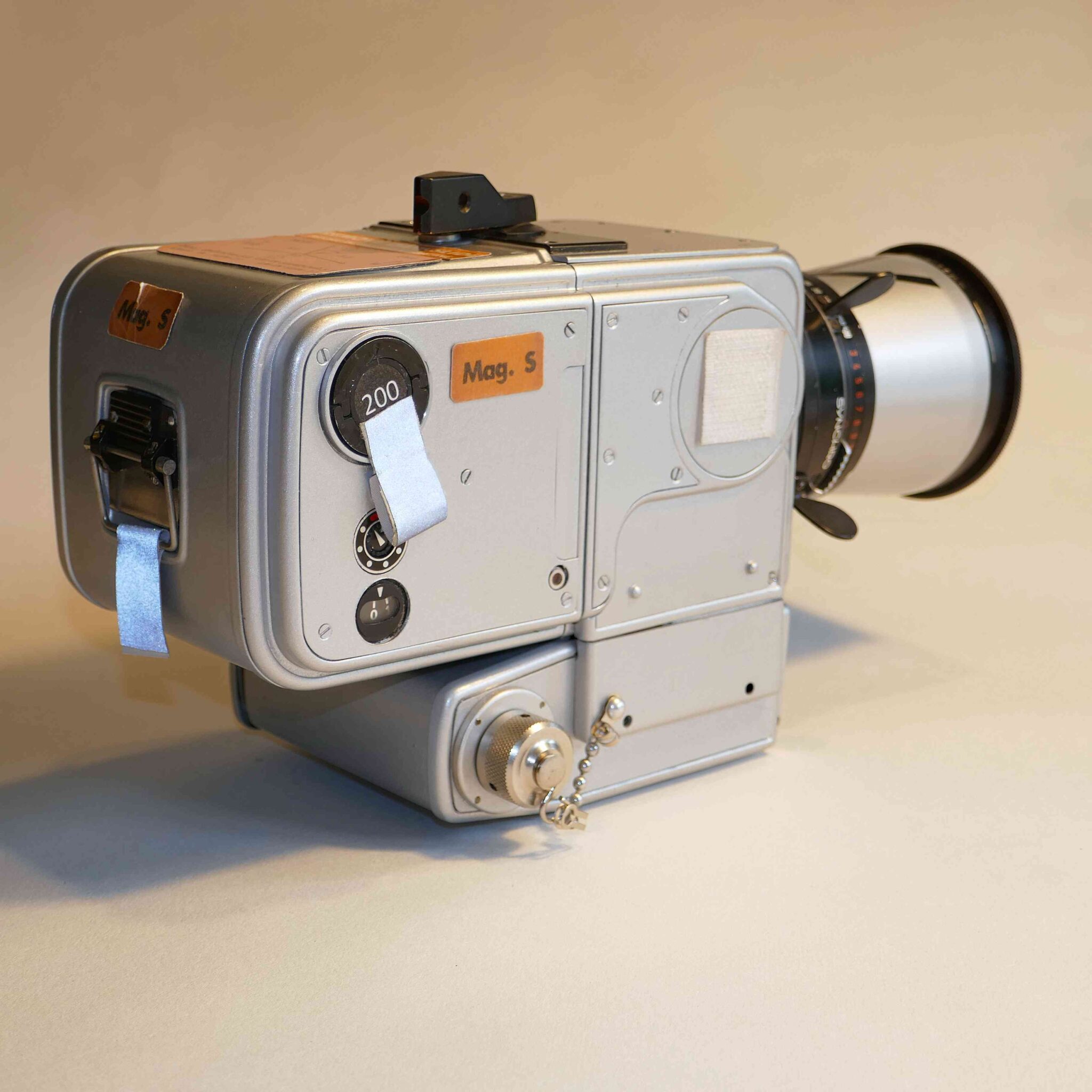
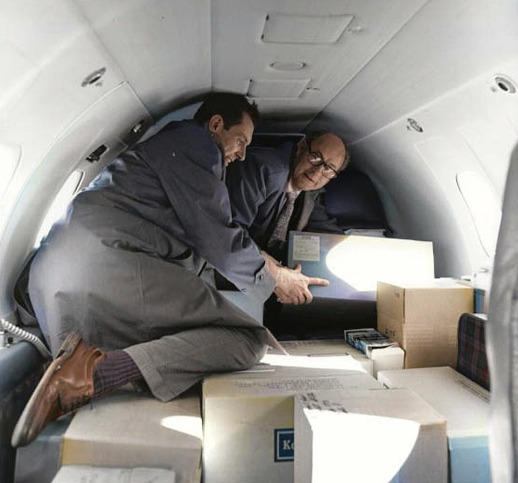
The Hasselblad 500EL Data Camera as used on the Apollo 11 mission. This camera was a modified version of the standard Hasselblad camera. Various changes had to be made to camera body prevent the film from overheating and changes were also made to the mechanical and electrical systems to cope with the vacuum of space and the dangers of electrical sparks in an oxygen-rich atmosphere inside the spacecraft.
Eugene Edmonds of MSC’s Photographic Technology Laboratory (wearing glasses) collecting a consignment of various types film from Kodak in Rochester, destined for Apollo 11. NASA Photo.
Buzz Aldrin with the flight Hasselblad during the Crew Compartment Fit and Function Training 25 June 1969. It is one of the very few photos of the flight camera, the actual Hasselblad that was used on the first moon landing. It can be identified by the number 304 in red on the camera body. Here, Buzz Aldrin is taking part in the crew compartment fit and function training on the 25 June 1969 at JSC. The camera is fitted with the polarizing filter along with the small safety chain attached the the camera barrel under Buzz’s forefinger. We can see the filter swinging under the lens in the moon walk TV footage as Neil stands by the TV camera. Captured in an ironic moment, Neil is seen reflected in Buzz’s visor, echoing Neil’s famous photo. Sitting beside Neil is Deke Slayton. NASA photo AP11-S69-38506
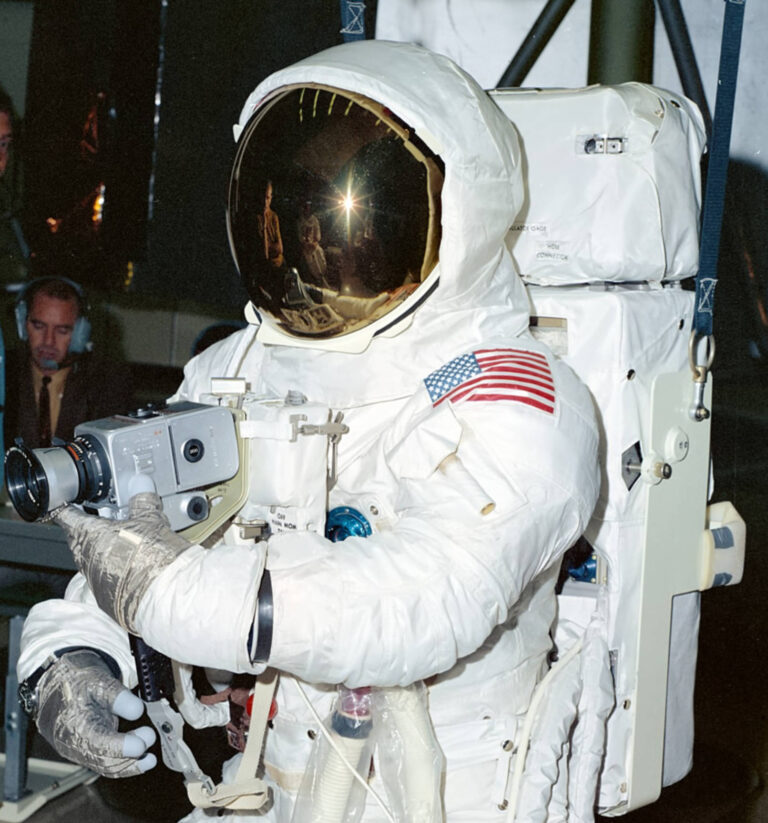
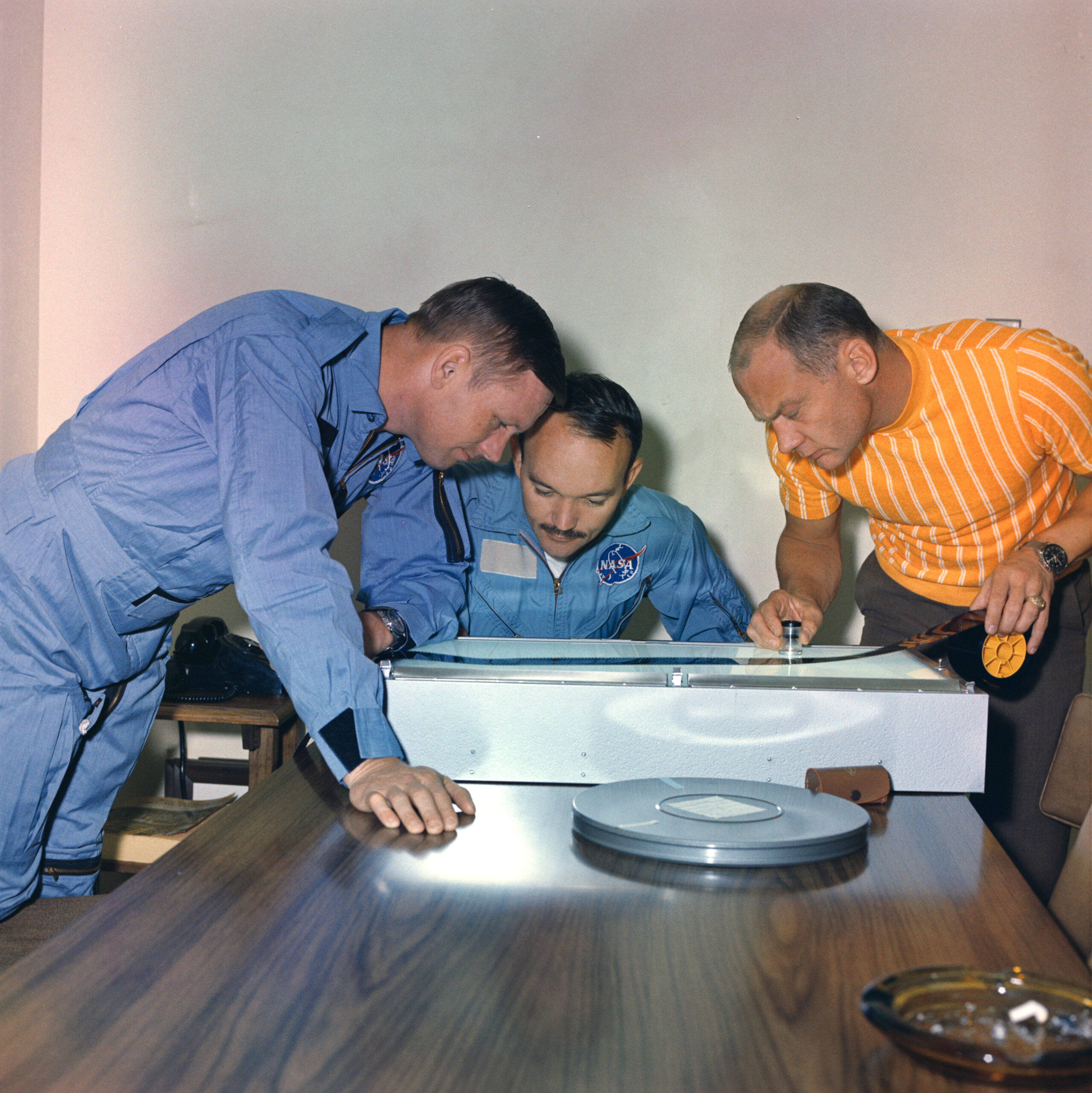
First look at he mission images
On return from the moon the crew were confined under strict quarantine at the Lunar Receiving Laboratory. It was a two-day wait for the film to come through the rigorous decontamination sequence and then another 7 hours for the processing run. The crew stayed up late on the 27th July nervously waiting to see the images they captured for the first time. Here, they are studying the duplicate rolls in the crew quarters.
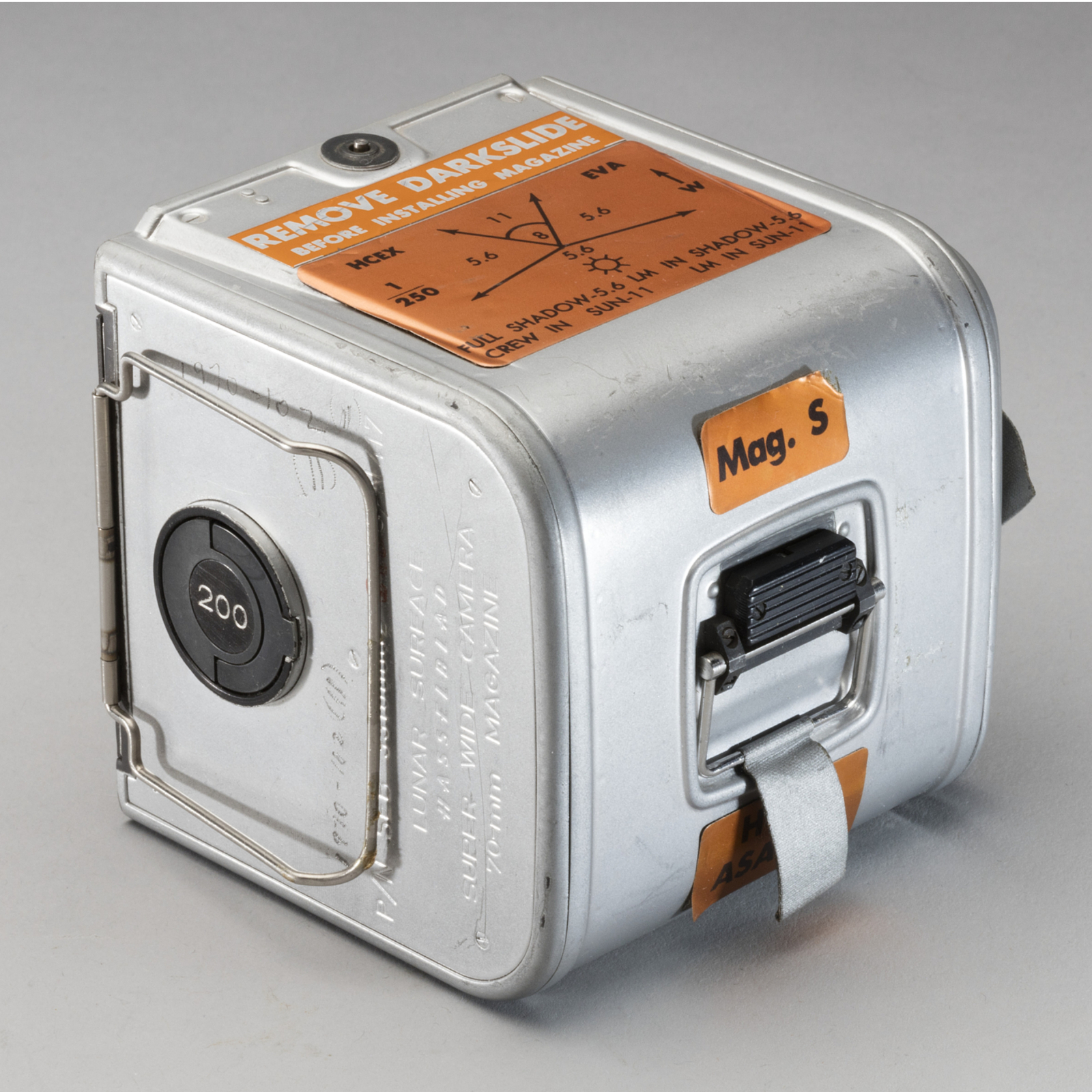
Magazine 'S'
The large capacity film magazine was especially designed for NASA. It was capable of holding 160 colour or 200 black & white. Apollo 11 carried of 8 these magazines, assigned letters: N, O, P, Q, R, S, and V.
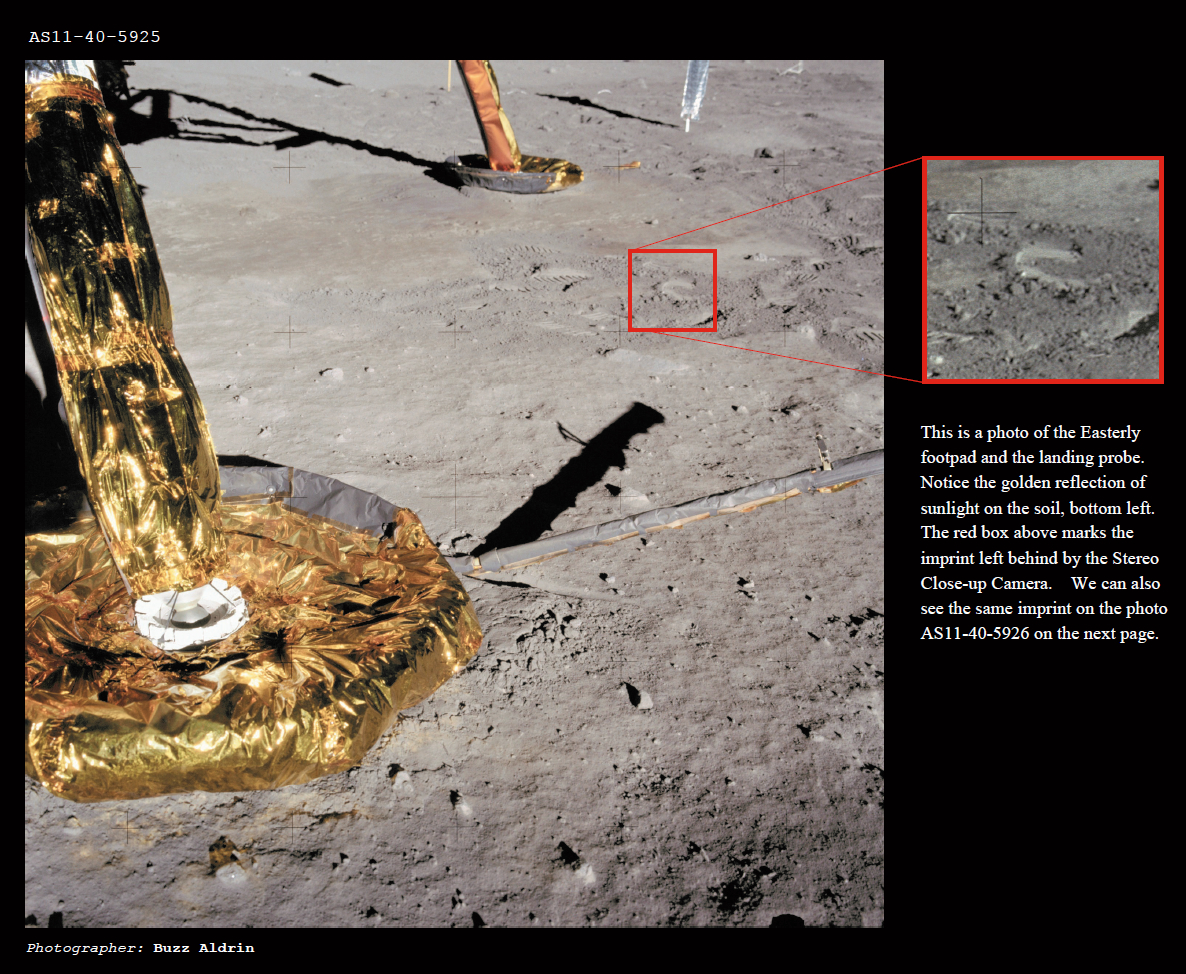
Imprint of the 'Gold' Stereo Camera
This is a photo of the Easterly footpad and the landing probe taken by Buzz Aldrin. Notice the golden reflection of sunlight on the soil, bottom left. The red box above marks the imprint left behind by the Stereo Close-up Camera.
The last photo taken at the end of the Apollo 11 moon walk. This view show the TV camera on the left and the pole which supported the Solar Wind experiment in the foreground.
Soil Mechanics Tests
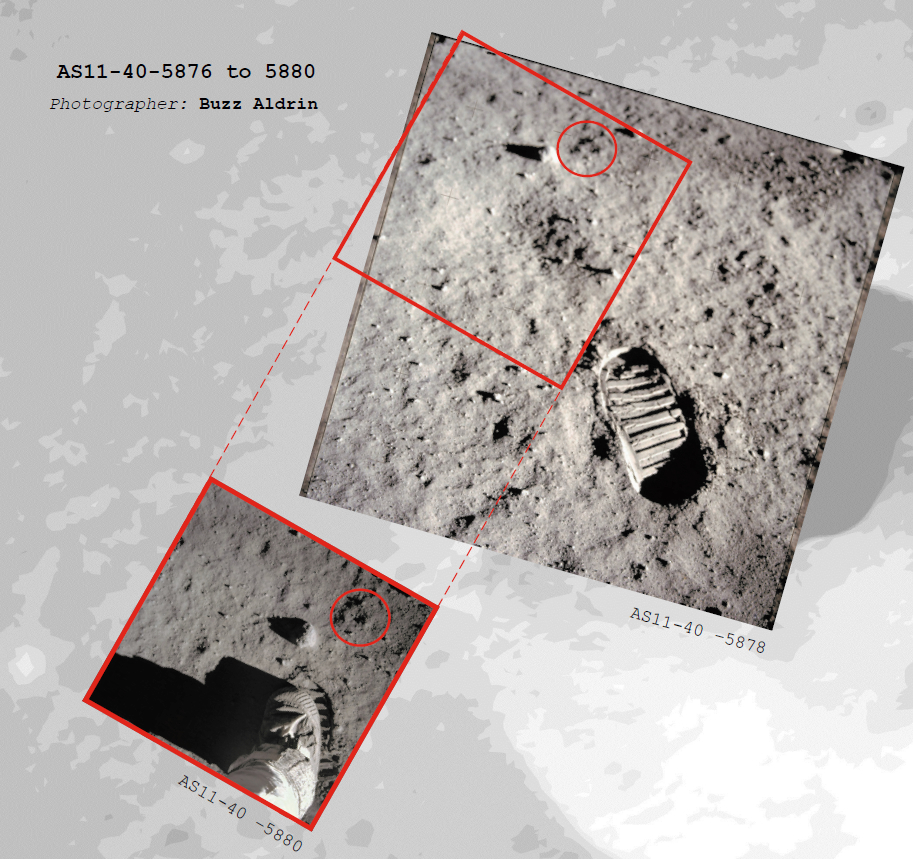
This page from the book is part of the section on Buzz's Aldrin's Soil Mechanics Tests in which he photographed his footprints to see how the soil behaved under compression. This was vital data used in the design of the Lunar Rover which was just starting in late 1969.
Eugene Edmonds of MSC’s Photographic Laboratory (wearing glasses) collecting a consignment of various types film from Kodak in Rochester, destined for Apollo 11.
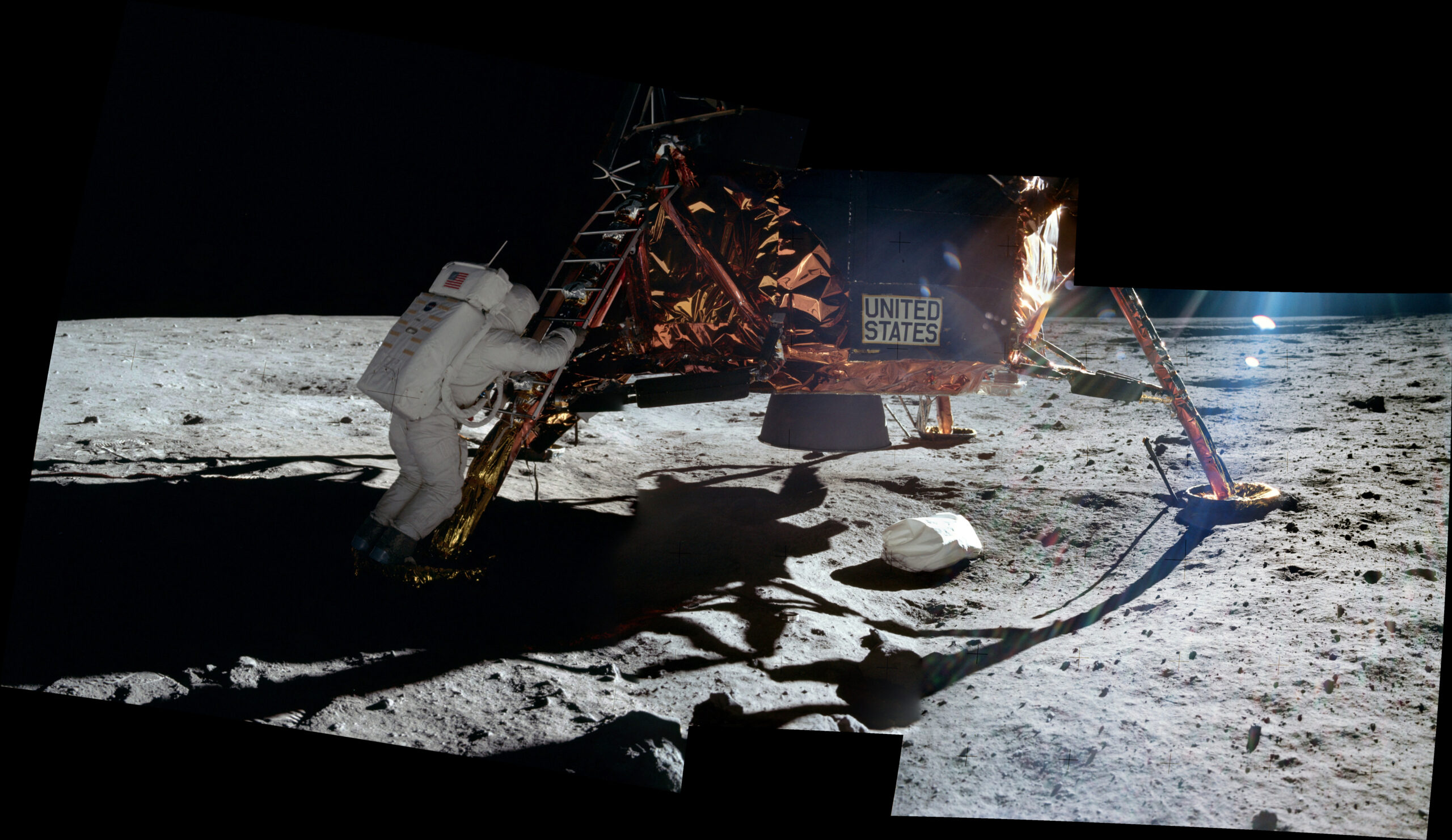
This photomosaic captures the moment when Buzz Aldrin was about to step onto the lunar surface.
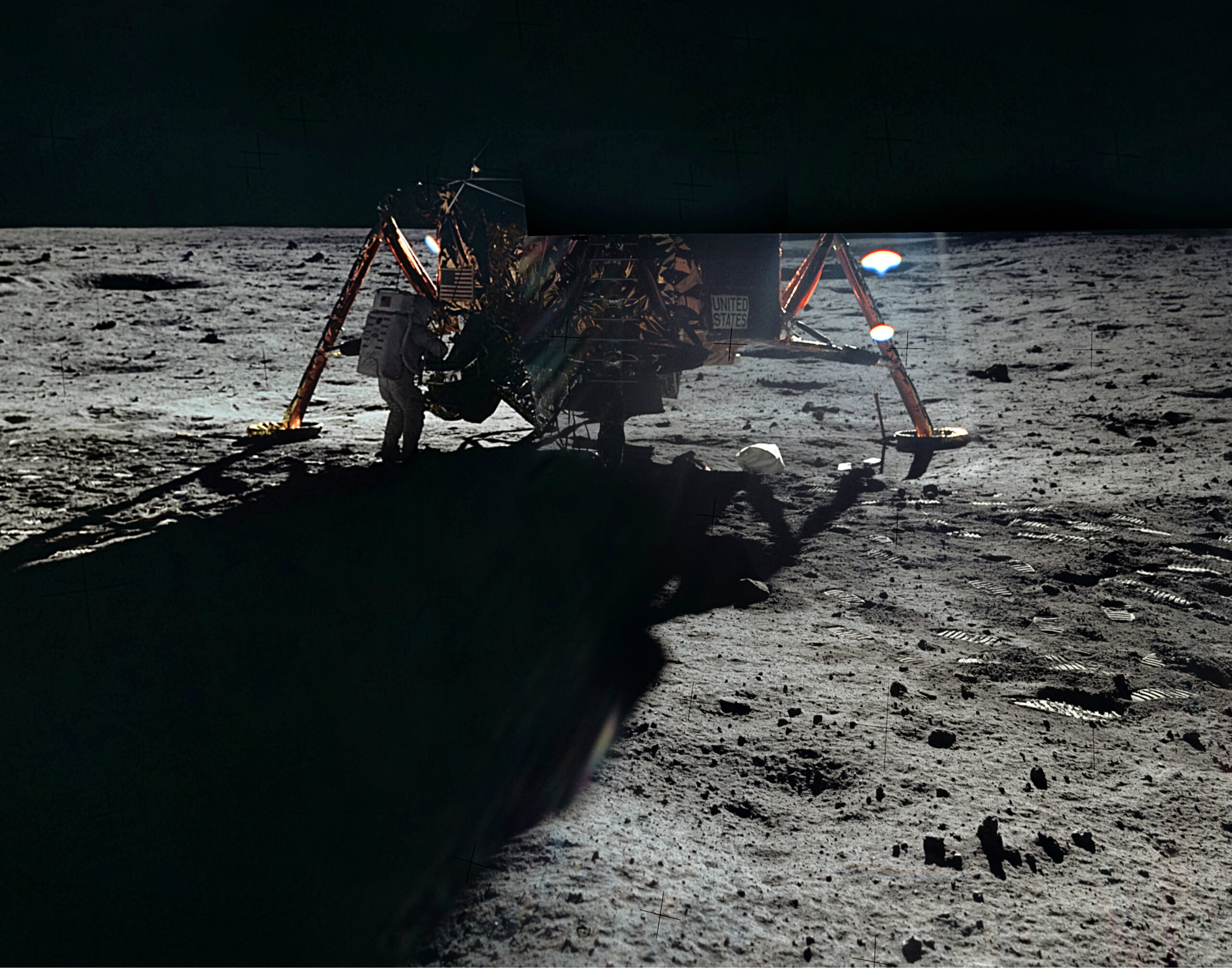
This is part of a photo panorama in which Buzz caught Neil Armstrong preparing some lunar samples for return to Earth.
